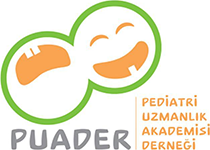Neonatal Type 1 Rhizomelic Chondrodysplasia Punctata with a homozygous PEX7 mutation and inguinal hernia
Savaş Mert Darakci1 , Sibel Tanrıverdi Yılmaz2
, Sibel Tanrıverdi Yılmaz2 , Merve Özbey Kavak3
, Merve Özbey Kavak3
1Diyarbakır Children's Hospital, Pediatrics And Child Health, Diyarbakır, Türkiye
2Dicle University School Of Medicine, Neonatology, Diyarbakır, Türkiye
3Dicle University School Of Medicine, Pediatrics And Child Health, Diyarbakır, Türkiye
Keywords: rhizomelia, punctate calcification, pex7 gene
Abstract
Peroxisomal diseases are a group of genetic diseases caused by defects in peroxisome biogenesis or enzyme deficiencies. Rhizomelic chondrodysplasia punctata type 1 (RCDP) constitutes the group caused by autosomal recessive mutations in the PEX7 gene encoding the PTS2 receptor. This report aims to describe a genetic disease that physicians rarely encounter, explain its basic features, and the importance of diagnostic approach and genetic counseling. A male infant was born at thirty eighth gestational week was born with the history of third degree consanguinity. Shortening of bilateral and symmetrical humerus was demonstrated at birth. Plasma phytanic acid levels were high and genetical analysis showed a homozygote p.Ala218Val (c.653C>T) mutation in PEX7 gene. Patient was operated due to bilateral cataracts in third month. Rhizomelic chondrodysplasia punctata type 1, with a prevalence of 1/100,000, is a group of diseases that many physicians rarely encounter. Different mutations in the PEX7 gene may cause different phenotypes. Although there is no curative treatment, supportive treatment is administered according to the severity of the symptoms. The prognosis of the disease is poor, with the majority of patients dying within ten years. Genetic counseling is critical as there is a 25% risk of the disease recurrence.
Cite this article as: Darakci SM, Tanrıverdi Yilmaz S, Ozbey Kavak M, Deger I, Ertugrul S. Neonatal Type 1 Rhizomelic Chondrodysplasia Punctata with a homozygous PEX7 mutation and inguinal hernia. Pediatr Acad Case Rep. 2024;3(1):1-4.
The parents’ of this patient consent was obtained for this study.
The authors declared no conflicts of interest with respect to authorship and/or publication of the article.
The authors received no financial support for the research and/or publication of this article.

